OH, OCTOBER!
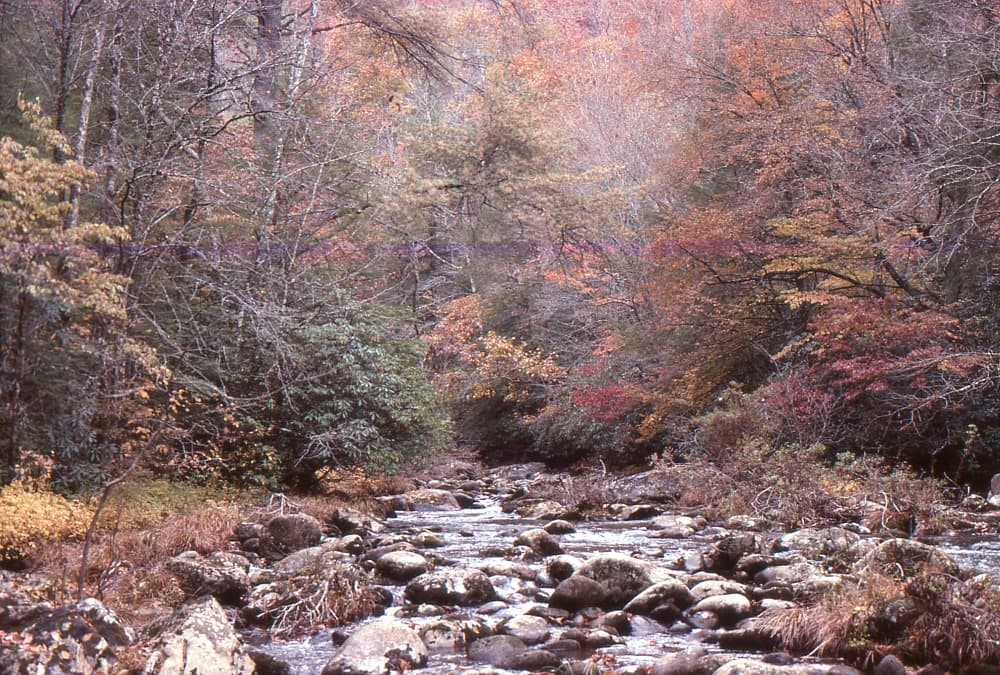
From as far back as my memory extends, I’ve had a passionate love affair with October. There are so many things about the month that are truly special, and from my personal perspective it vies with May for the finest month of the year. I could go on pretty much endlessly about my romance with October, and maybe that’s why my father, at various times, suggested that I had a “tongue that wagged at both ends” or possessed the questionable ability to “talk the ears off a Georgia mule.” I don’t reckon I have a lot of grounds for defense of those charges of garrulousness, but then maybe that inclination was what led me to be a writer. Such considerations aside, here are some evocations of things I think about with the arrival of October, and rest assured these are but a select sampling of my adoration for the month. I hope you share some of these emotions, and if so I reckon you are mighty blessed.
FOOD MEMORIES
*The delights of a properly made persimmon pudding.
*Gathering black walnuts for treats in the form of cookies, apple sauce cakes, and black walnut cakes during the holiday season.
*Munching on chinquapins while walking through the woods.
*Chomping into a Red or Golden delicious apple so juicy moisture inevitably runs from your mouth. If plucked from the tree in the dew of early morning it will also be so cold in the morning dew that your teeth hurt.
*Gathering Chinese chestnuts from the trees in our yard and listening to Dad and Granddad reminisce about October days when the American chestnut was king.
*October beans withering on the vines in corn fields, gathering those October beans, and thrashing them atop old sheets to separate the beans from the husks. Come January or February, a pot of those beans, simmered all day long with a good chunk of streaked meat, offered provender fit for any appetite.
*Going out into the fields to gather pumpkins and candy roasters for winter storage.
*Enjoying the bounty of the season’s first wild game as Mom graced our table with baked squirrel, fried squirrel, or squirrel and dumplings.
*Inhaling the heady aroma of sweet potatoes roasting in their own skins with caramel-like sweetness oozing out.
*Feasting on a mess of baked squirrel to go with those sweet potatoes.
*Delighting in fresh venison backstrap or tenderloins, properly cooked and served with side dishes such as just-picked turnip greens, baked cushaw (a type of winter squash), and October beans.
SIGHTS, SOUNDS, SMELLS, AND MEMORIES
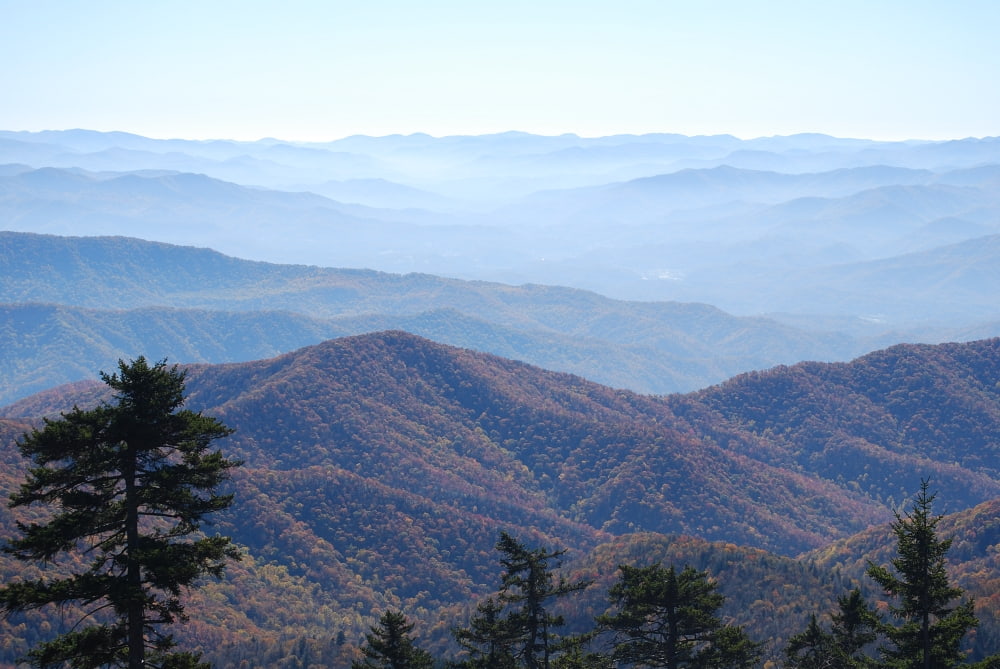
*Frosty mornings late in the month, with a golden field of broomsedge sparkling with a million diamonds in the rising sun.
*The sweet and satisfying smell of newly plowed ground, with everything turned under to rot in the winter before plowing and planting time returned once more with the glories of spring.
*A lot full of hogs eating red-rooted pig weed, corn fodder, more than a fair ration of shelled corn, inferior pumpkins, bruised sweet taters, the last of the year’s watermelons, and whatever else the good earth has to offer. Little do they know that their world of plenty will soon give way to an Armageddon Day for swine. As soon as the first hard freeze arrives towards month’s end or maybe early in November, their salad days will be no more. In my adolescent world hog-killing time was incredibly busy but if you’ve never eaten fried tenderloin taken from a pig that very day I would submit that yours has been a life of culinary deprivation.
*Busy bushytails raining hickory nuts down from trees bedecked in brilliant gold.
*A wizened and wise country farmer, a man who has lived on land which has belonged to his family for generations, pursuing the timeless rituals of the harvest—picking apples from the farm’s orchard; filling a corn crib with full ears that will fatten hogs and feed chickens that lay eggs that taste far superior to anything ever find on grocery store shelves; gathering pumpkins to make leather, bake into pies, feed raw to the hogs, or carefully store in a root cellar for use in the months to come. With the exception of generations of land ownership, my paternal grandfather was such a man.
*Savoring the odor of a patch of pawpaws, ripe and inviting as their fruit falls to the ground.
*Hazelnuts littering the ground along the banks of a creek, inviting squirrels and humans alike to sample and savor their rich flavor.
*Black walnuts falling to the ground, with husks beginning to rot away to leave a nut which, once tediously hulled, cracked, and picked for its meat, amply justifies all the painstaking work required.
*Taking a journey back to yesteryear by mental “sledding” on a piece of cardboard on a hillside in that same broomsedge field once warm sun as dried it out.
*A hillbilly boy grown old taking a page from his boyhood and thinking of the endless hours he spent honing his accuracy with a slingshot he made from a carefully selected fork of dogwood.
*Joying in fall flowers—Joe Pye weed, goldenrod, ironweed, wild asters, and the last cardinal flowers–showing their finery.
*Persimmons turning from yellow to gold, ripening as the nights lengthen and cool weather strengthens.
*Hardwood ridges ablaze in an array of colors no artist’s palette or talent can quite match.
*The visual glories of a hunter’s moon, seemingly filling the whole eastern horizon with gold and orange as light gives way to night.
*The heady aroma of nature’s perfume floating on gentle breezes, a mixture of fall flowers, just a hint of dust, ripe or ripening fruits, a touch of sweet decay, a bit of manure from the barn, and more. If you can’t smell autumn, about all I can say is you ain’t country.
*Old-timers celebrating the long-established ritual of molasses making, with yellow jackets half drunk from the skimmings and the sweet juice turning from light amber to dark richness as it heats and thickens under the control of a master ‘lasses maker.
HUNTING MEMORIES
*The occasional chance to kill a grouse which walked by or was flushed when out squirrel hunting.
*Walking home in the gloaming with a brace of squirrels in my Duxbak jacket and a chest bursting with pride at having done it all on my own.
*The sound of beagles, training for the rabbit season which lies not too distant, hot on the cottontail trail in the chill of evening.
*A well-worn Duxbak jacket hanging on a peg silently begging to be used, and an old dog which recognizes that jacket means good times in the fields and woods.
*The incomparable perfume of Hoppes’ No. 9 and burnt gunpowder.
*Scattering a flock of turkeys on a fall hunt and listening to the woods ring with clucks and kee-kees as they try to reassemble.
*A fleeting glimpse of a grouse taking flight from an old logging road.
*Walking through the woods, carrying a gun but really doing nothing more than wandering in the aimless way which is the special privilege of the young and elderly. I guess I’m well into the latter category, because I find I seem to enjoy walking and piddling more with each passing year.
*Sighting a wide-racked old buck, neck swollen with the rut, easing along a woodlands trail while hoping against hope shifting winds don’t betray his presence.
*Most of all, October is a month which blends the fulfillment of a spring and summer of hard work on the land with the promise of the special joys associated with the death of nature in her never-ending cycle of death and rebirth, grey grimness and green richness.
*******************************************************************************
THIS MONTH’S BOOK SPECIALS
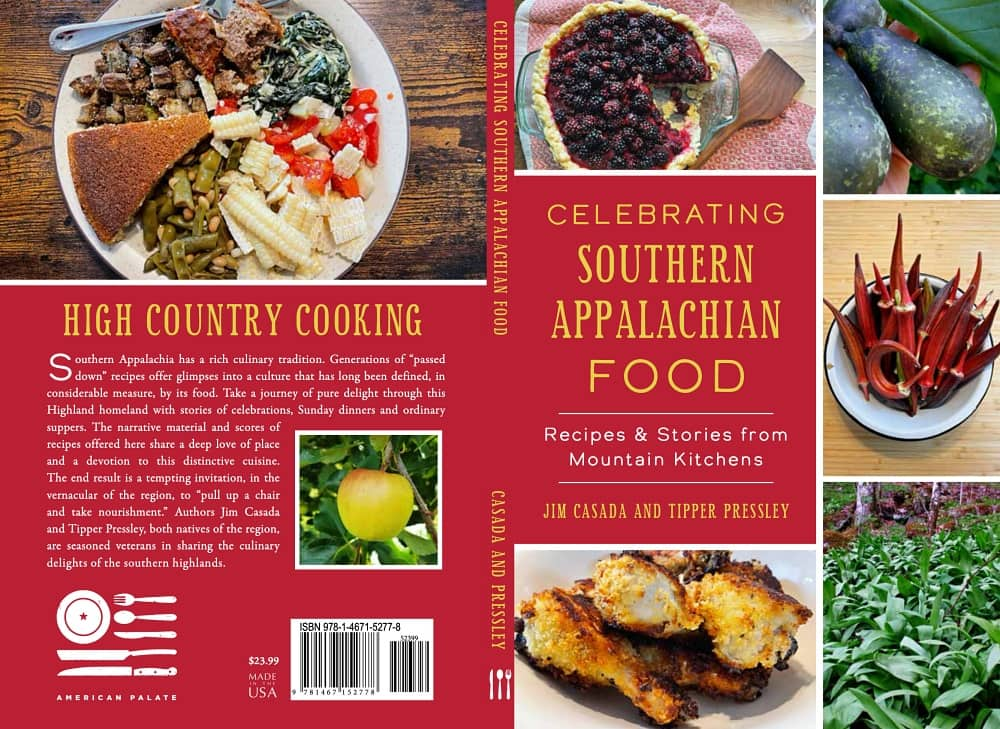
Since it’s deer hunting season and two of this month’s recipes feature venison, it seems only appropriate to feature two recent cookbooks with some focus on that area. One is Celebrating Southern Appalachian Food, which I coauthored with Tipper Pressley. It has received wide acclaim, we did a bunch of book signings and talk, and thanks mainly to Tipper’s wide audience reach, the work has sold very well. If you don’t have a copy here’s an opportunity, and I would noted that it isn’t too early to be thinking about Christmas gifts. This cookbook, which delves into the wide range of Appalachian cookery with 200+ recipes and a great deal of food folklore, is $24.
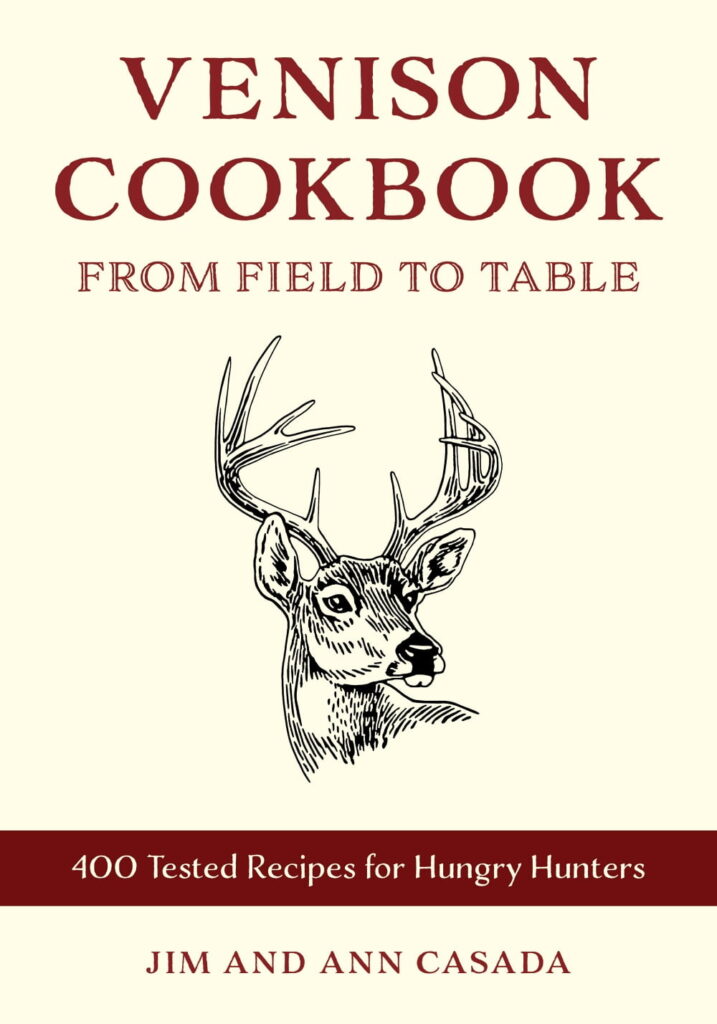
The second book is the just released Venison Cookbook: From Field to Table—400 Field- and Kitchen-Tested Recipes. It brings together years of work by my late wife, Ann, and me dealing with venison cookery. Earlier this week I was interviewed by John Kruse of America Outdoors Radio, which plays on well over 100 stations nationwide, about the book and its contents. The book sells for $25. Again, this would make a great Christmas gift for fellow hunters, and if you hunt deer there are recipes aplenty for your meat.
Postage is $6 for each book and $2.50 for each additional book up to a maximum of $12.50 no matter how many books are ordered. Also, buy one copy of each book and the two-book package, shipping included, is $50. As always, I’m more than happy to sign, inscribe, and personalize books per your request. Order by check (Jim Casada, 1250 Yorkdale Drive, Rock Hill, SC 29730) and if you have questions feel free to call me at 803-329-4354.
********************************************************************************
JIM’S DOIN’S
As is ever the case, October is a busy month for me. It means the arrival of another deer season and lots of time in the field. I shot a fine doe for the freezer on opening day of modern gun season and will strive to put at least two more on the ground as foodstuffs for coming months. I always end up with some leftover meat but a food bank connected with a local church is more than happy to get it, and I have a good feeling of offering a bit of a hand up to needy folks.
My initial forays into writing humor have gone surprisingly well, and I’m including another episode from the cataclysmic life of poor Mollygrubs Messer below. If you want to follow along regularly, the pieces are appearing roughly once a week in “Sporting Classics Daily” (sportingclassicsdaily.com), usually on a Thursday or Friday.
Predictably, since it is always the case, I thoroughly enjoyed interacting with longtime acquaintances and meeting some new ones at the annual fall meeting of the South Carolina Outdoor Press Association host by Lake Murray Country (www.lakemurraycountry.com) in the Columbia, SC area. Lake Murray and the streams that form it offer an incredible and diverse fishery. It’s one of the top destinations for major bass tournaments year after year, the striper fishing is exceptional, there are tailwater trout opportunities, and perhaps the best-kept secret of the region’s angling opportunities involves river fishing for smallmouth bass. Then, on top of all this horn of angling plenty, there are opportunities aplenty to catch catfish, crappie, and panfish.
One aspect of this year’s gathering, as is true each fall, involved recognition of members for their achievements as communicators over the course of the previous year. The Harry Hampton Memorial Wildlife Fund (www.hamptonwildlife.org) named for a pioneering conservationist and outdoor journalist in South Carolina, has long been at the forefront conservation endeavors in the state, and it supports the annual excellence in craft contests.

Photo courtesy of Joey Frazier
This year I was fortunate enough to have entries in five different categories be among the winners. They included 1st place for “Memories of Butchering Hogs” in Smoky Mountain Living in the short feature category; the Terry Madewell Award honoring the best hunting story of the year for “Fred Selous: Heart of Steel” in “Sporting Classics Daily;” the Bob Glendy Award honoring the best fishing story of the year for “A Murderer as Mentor: The Strange Saga of Old Al” in “Blind Pig and the Acorn;” 2nd place in the best outdoor book category for Lords of the Veldt & Vlei; and 2nd place for the best electronic publishing story for “Did You Ever?” in Smoky Mountain Living on-line.
RECENT PUBLICATIONS
In addition to weekly installments of the Mollygrubs Messer saga on “Sporting Classics Daily,” I have had a number of other pieces appear in print of late. They include “Books on Theodore Roosevelt as an Outdoorsman,” Sporting Classics, Sept./Oct., 2023, pp. 119-22; “Sourwood Honey: The Ultimate Mountain Sweet,” Carolina Mountain Life, Fall, pp. 119-20; “The Bounty of Black Walnuts,” Smoky Mountain Living, Oct./Nov., 2023, pp. 16-20; and a guest column in Tipper Pressley’s wonderful daily offerings on her “Blind Pig & the Acorn” blog, “An Ode to October,” October 17, 2023.
*****************************************************************************
ANOTHER MOLLYGRUBS MESSER MISADVENTURE
As promised, here’s another sampling of my ongoing chronicles of the misadventures of the hapless character known as Mollygrubs Messer.
DUXBAK DISASTER
The aftermath of the most unfortunate chain of events connected with Mollygrubs’ misfortunes at the Junior Conservation Banquet reverberated through the town of Stony Lonesome for weeks. The hapless lad was harangued unmercifully by his male companions while Mitzi Merkle, once quite happy to flaunt her attributes before the eyes of all and sundry, walked about with downcast eyes and a seemingly permanent blush. Yet their adolescent misery paled in comparison with the state of affairs in the Messer household.
Overnight Mollygrubs’ mother, “Caring Karen” Messer, had been tumbled from her place atop the ranks of the town’s matriarchy into seemingly endless doom and gloom. She developed what, if one listened to the analysis offered by the cadre of codgers holding court daily at Dead Pecker Corner, a permanent case of vapors. Neither Mollygrubs or his sire could do anything right, and mere mention of the name Merkel or the Junior Conservation Banquet was sufficient to plunge her into a fit of racking sobs and send her straight to the refuge afforded by her bedroom. Mr. Messer was relegated to nighttime residence in the guest bedroom and both he and his son soon discovered that the best course for daily living was to avoid the sole female presence in the household with all the assiduity of a wild turkey avoiding a bobcat. Not surprisingly, her domineering absence from the scene, no matter its negative impact on provision of daily meals and myriad other household chores, brought father and son much closer to one another.
Once fall rolled around, they had the opportunity to do some squirrel hunting together on weekends, went on a father-son camping trip, and in general enjoyed one another’s company. It was this new closeness, made possible by the retreat from the scene by the distaff side of the Messer family, that led Mollygrubs’ father to buy him a new Duxbak hunting cap.
It was an era, long before the advent of camouflage patterns, when Duxbak attire was just the ticket for the average hunter. Anything produced by the company—hats and caps in various configurations, vests, jackets with capacious game pouches, pants, and more—lasted pretty much forever. The fabric was stiff canvas, fully capable of “galding” the inside of tender thighs to the point of making anyone wearing Duxbak pants walk in a stance so bow-legged he couldn’t have hemmed a hog in a ditch. Duxbak scoffed at briers and was so durable that in families with more than one boy, attire was handed down with no repair other than some possible attention to frayed pants’ bottoms being necessary.
Mollygrubs was passing proud of his new topper and wore it to school every day. That was a time when caps were worn only outdoors, with no exceptions, but he carried it around in the school building and immediately donned the stiff brown canvas cap, replete with fold-down sides, when he went outdoors. In his own eyes he was the epitome of sartorial splendor on the local scene, and truth be told, classmates who usually filled his life with misery were secretly envious of his cap.
The Biblical book of Proverbs reminds us that “pride goeth before a fall,” and Mollygrubs was soon to learn something of the truth inherent in that precept. He may not have fallen, but he had the dickens frailed out of his somewhat ample posterior.
In those days in Stony Lonesome schools, corporal punishment not only existed; there were applications thereof whenever needed. One teacher who staunchly adhered to the adage suggesting that sparing the rod could quite likely spoil the child was Mollygrubs English teacher at Stony Lonesome High School. That erstwhile pedagogue, one Thad DeHart, was an extraordinary presence in the classroom. At the outset of the year he handed students a mimeographed list, running to several pages, of what he described as “ten-dollar words.” With rare exceptions they were completely unknown to those under his tutelage. By year’s end students were expected to learn the meaning of the words, know how to spell them and use them in a sentence, and extra credit could be garnered by citing an example of where the word was used in a magazine or book. The latter, of course, encouraged students to read for pleasure as well as classroom profit.
While Mollygrubs enjoyed the class and thought far more of the Mr. DeHart than he did most of the drudges holding court in Stony Lonesome High School, he also seemed constitutionally unable to stay out of trouble. A bright lad, he was easily bored by the tedium of daily lessons and also, thanks to being rather gifted intellectually, picked up what was being taught far more rapidly than many of his peers. Moreover, he had a distinct inclination to seek attention. Other teachers tolerated his frequent misdemeanors with varying degrees of resignation, but not Thad DeHart.
That academic worthy kept a barber’s razor strop handy in the cloak room at the back of the class, and on occasions when circumstances merited, he would employ that instrument in delivering what he described as “six of his best.” Mollygrubs had previously experienced a dose of half a dozen solid licks and knew they were quite painful. But when the day arrived for another application of that particular cure for misbehavior, he had a spark of inspiration that proved about as ill-fated as the time when he told Mitzi Merkle the next song they heard would be theirs and it turned out to be “Dead Skunk in the Middle of the Road.”
Thad DeHart, exasperated with Mollygrubs motor mouth interrupting on a seemingly constant basis, reached his breaking point. He told Mollygrubs to go up to his desk and bend over while he retrieved the razor strop. As soon as he was out of sight, the boy grabbed his Duxbak cap and hastily stuffed it in the seat of his pants. His reasoning was simply—the thick, stiff canvas should work wonders in easing the brunt of the coming blows. Instead, the cap had the opposite effect.
Maybe it was the sniggering of his fellow students that alerted Thad DeHart that something was amiss. Or maybe the hasty positioning of the cap left tell-tale bulges that he detected. Whatever the case, all of Mollygrubs’ classmates witnessed an epic delivery of six blows (all watched corporal punishment in Thad Dehart’s class; he told them it was pour encourager les autres) His thinking was that the meaning and origin of the phrase offered a bit of history, worked a bit of foreign lingo into their vocabulary, and did serve as an example of what happened if they went astray. On this occasion, having detected the presence of extra padding, Thad DeHart laid into hapless Mollygrubs with a will that employed all of his sinewy strength while his classmates watch in anguished awe.
It was all Mollygrubs could do not to cry, and for several days afterward he exhibited a great deal of delicate care whenever taking a seat. He never said a word to his parents about the episode, because had his mother seen his black-and-blue bottom she would have gone into hysterics while his father, a member of the local school board, would have waited until his buttocks were better and then given him another solid dose of corrective medicine.
From that point forth, although he continued to like and even take pride in his Duxbak cap, Mollygrubs never viewed it with quite the same degree of affection. It carried with it too many painful memories. Also, he never again evoked the ire of Thad Dehart. Administration of what was truly six of his best worked behavioral wonders.
*******************************************************************************
RECIPES FOR OCTOBER
ANNA LOU’S SQUIRREL
1-2 squirrels, dressed
Water to cover meat
1 teaspoon baking soda
1-2 tablespoons butter
Place squirrels in large saucepan. Cover with cold water, ad soda and heat to boiling. Remove from heat and rinse squirrel well under running water (rubbing to remove soda). Return to pan and cover with fresh water. Bring to a boil; reduce heat and simmer until tender. Place squirrel in baking dish, dot with butter, and bake at 350 degrees until browned and crusty.
This was Mom’s favorite way to cook squirrel. You can prepare rabbit the same way.
MATT’S VENISON ROAST
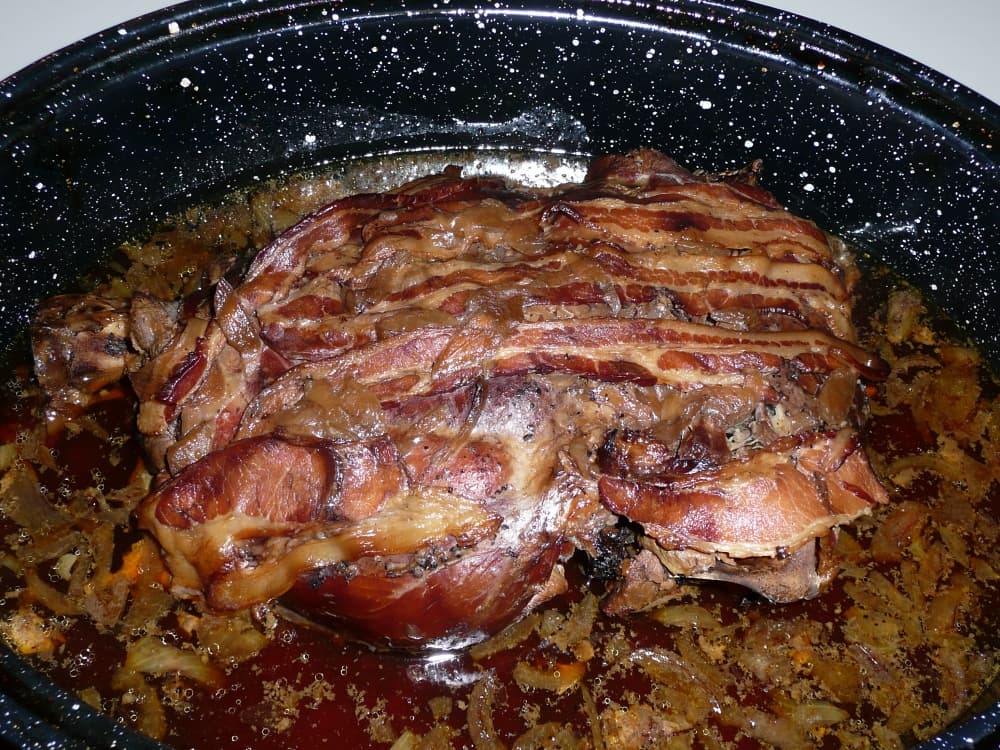
Almost all the recipes I share come from my family archives or one of the cookbooks with which I’ve been involved. This one is different, but it’s so tasty, so easy, and so wonderfully satisfying I just had to include it at this time of year and with deer hunting season in full swing. It comes from Matt Pressley, the husband of Tipper (whose talents as my webmaster make this newsletter a reality and my co-author of Celebrating Southern Appalachian Food: Recipes and Stories from Mountain Kitchens).
Place a deer roast (the hindquarter of a nice doe is just the right size) in a large roasting pan and pour an inch of water or apple cider around the meat). Next sauté a heaping tablespoon of minced garlic with a stick of butter. When melted and with the garlic translucent pour it over the roast. Season to your personal taste with black pepper, coarse salt, oregano, or other dried spices. Cover the ham with slices of bacon, using toothpicks to hold the bacon in place. Drizzle the ham with a bit of honey and a splash of vinegar. Cover with the roasting pan lid (or tinfoil) and slow bake at 220 degrees for 9 hours. When cooking is complete the roast will fall away from a knife with scarcely any pressure. Also worthy of note is the fact that leftovers make dandy meat sandwiches.
VENISON LOIN STEAK IN BRANDY CREAM SAUCE
The first deer of the season is cause for celebration, and here’s another fine way to celebrate with a festive feast featuring prime cuts.
2 venison loin steaks (8-10 ounces each) cut to one-inch thickness)
2 tablespoons liquid margarine (plus one tablespoon with sauce)
1 cup evaporated milk
2 tablespoons brandy
½- 1 teaspoon salt
¼ cup mushrooms
3 slices from a small onion, divided into rings
Place two tablespoons margarine in non-stick skillet. Have pan hot before adding venison steaks, onions, and mushrooms. Cook steaks on medium high for 5-6 minutes per side. Inside of steak should be pink. Remove onions and mushrooms when tender. You may need to add about one more tablespoon of liquid margarine while cooking; be sure to have some left in the pan. Add milk, brandy, and salt. Remove venison to serving dish. Cook sauce until thickened and reduced by about half. Stir constantly. Add mushrooms and onions to re-heat. Pour sauce over steaks.
FRIED SQUIRREL
1 cup flour
1 teaspoon salt
¼-1/2 teaspoon pepper
1-2 eggs
2 squirrels, cut into pieces
½ cup canola oil
Mix flour, salt and pepper and place in a paper or plastic bag. Beat egg well and place in a shallow dish. Drop squirrel pieces in flour bag, shake to cover well, remove squirrel, and dip in egg mixture. Return squirrel to flour bag and shake to coat well. Repeat with all the squirrel pieces. Heat canola oil in skillet and quickly brown squirrel. Black browned squirrel in a roasting pan or baking dish and bake, uncovered, at 250 degrees for approximately 1 ½ hours or until the meat is tender.
SMOTHERED SQUIRREL
2 squirrels, quartered
Flour
3 tablespoons butter or oil
1 onion, sliced
Salt and paprika
1 cup sour cream
Sauté flour-coated squirrel in butter until it is browned. Cover squirrel with onion slices and sprinkle with salt and paprika. Pour sour cream over the squirrel. Cover and simmer for an hour or until the meat is tender.
PERSIMMON PUDDING
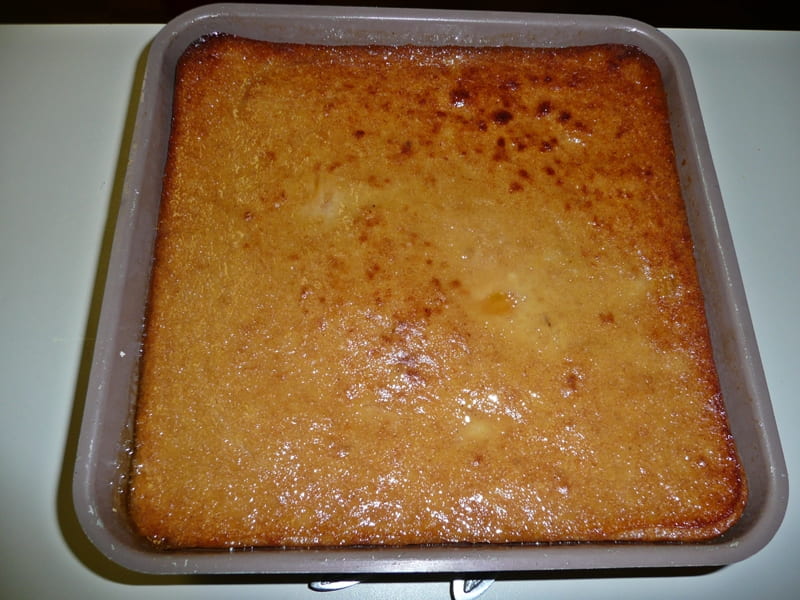
2 cups persimmon pulp
2 cups packed brown sugar
¼ cup butter, melted
1 teaspoon vanilla
1 ½ cups self-rising flour
½ cup light cream or milk
2 eggs, beaten
½ teaspoon cinnamon
½ cup raisins or black walnuts (optional)
Combine all ingredients and beat just until well mixed. Pour into a greased 9 x 13-inch pan and bake at 350 degrees for 30-35 minutes or until golden brown and just beginning to pull away from the sides. Remove from oven and cool slightly. Cover and seal tightly with foil or plastic wrap. Cut into squares when ready to serve (with whipped topping).
BLACK WALNUT CINNAMON OATMEAL COOKIES
½ cup sugar
¾ cup packed brown sugar
1 ¼ cup margarine
1 egg
1 teaspoon vanilla
3 cups oats, quick cooking or regular
1 ½ cups flour
1 ¼ teaspoons cinnamon
1 teaspoon baking soda
½ cup raisins
2 cups black walnut kernels
Cream sugars and margarine; add egg and vanilla. Place dry ingredients in a separate bowl and mix well. Add raisins and walnuts to dry ingredients. Combine creamed mixture and dry ingredients well. Drop by tablespoons onto cookie sheet. Bake at 350 degrees for 8-10 minutes or until golden brown.